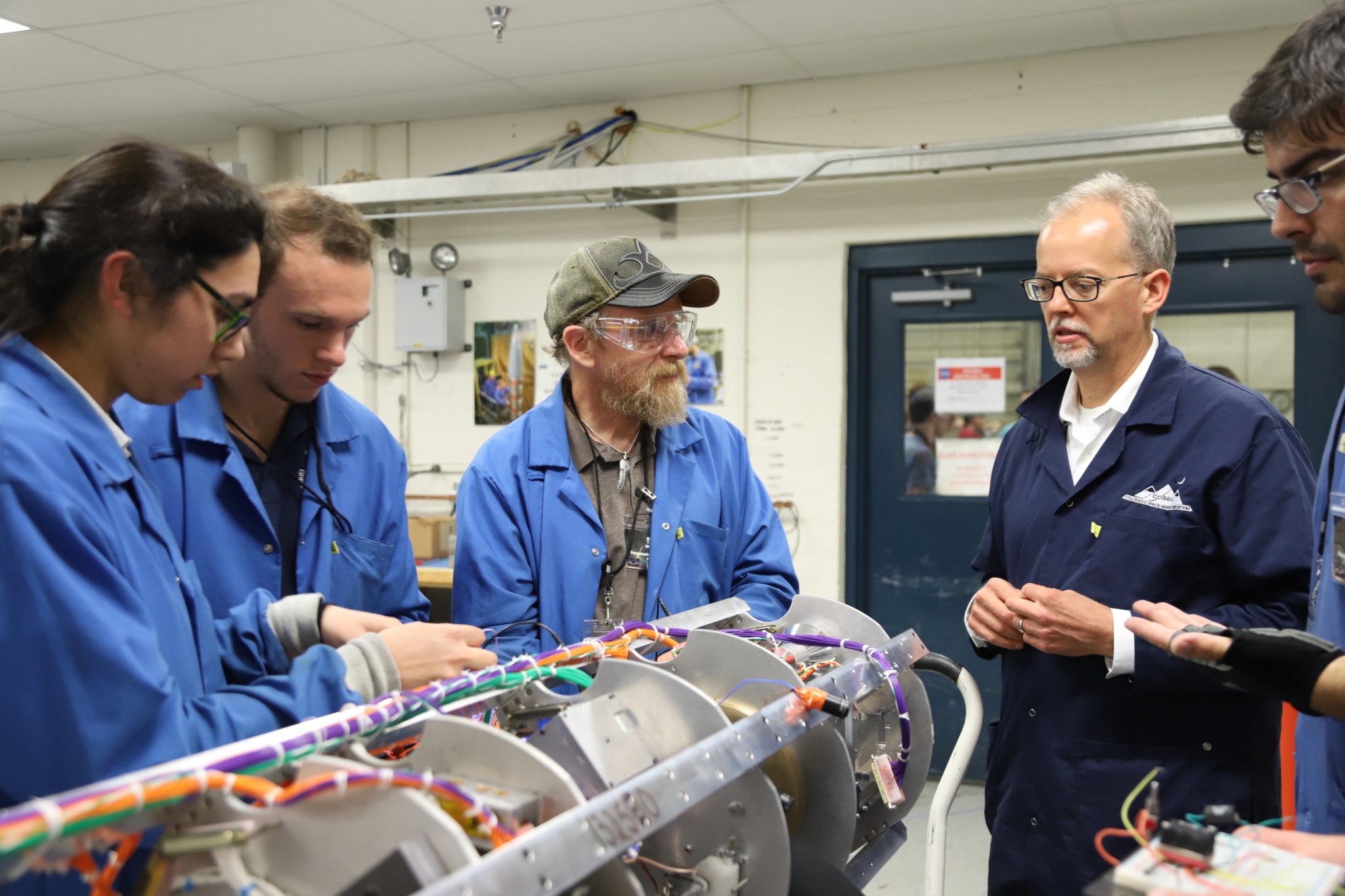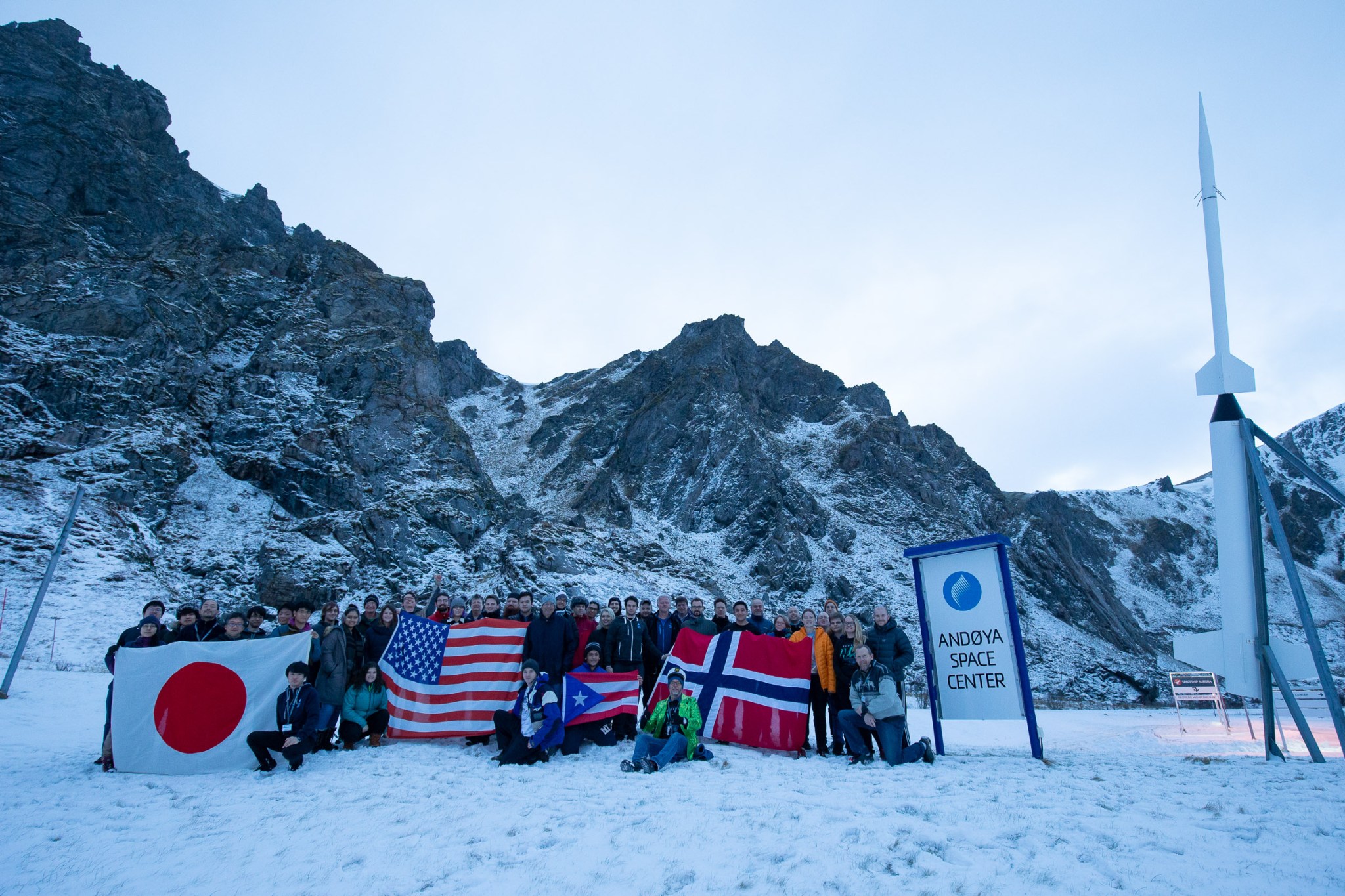Before arriving in Andenes, Norway, on Jan. 3, 2019, Alvaro Guerra and Erica Venkatesulu — both juniors at Pennsylvania State University in State College — had never seen the northern lights. Yet in a few short days, they would launch a rocket right into them.
“I’d never done anything like this before,” Guerra said. “I thought we would just make a tiny rocket with a little payload, but no — it turned out to be a full-on scientific mission with real instruments.”
Guerra and Venkatesulu flew their experiment on the G-CHASER rocket, which launched from the Andøya Space Center in Andenes, Norway, on Jan. 13, 2019.
G-CHASER, short for Grand Challenge Student Rocket, is a sounding rocket, from the nautical term “to sound,” meaning to measure. Sounding rockets carry scientific experiments for a quick trip into space before falling back to Earth a few minutes later. G-CHASER — which carried experiments from teams in the U.S., Japan and Norway — was the fourth of nine sounding rocket missions taking part in the Grand Challenge Initiative – Cusp, an international collaboration to explore the polar atmosphere.
“But it’s the only student flight in the Grand Challenge,” said Chris Koehler, the principal investigator of the Colorado Space Grant Consortium in Boulder. “We’re flying seven different student experiments on one rocket — each mission is unique to their team.”
The experiment Guerra and Venkatesulu worked on is called the Polar Atmospheric Winter Student Sounding rocket, or PAWSS, which they started designing in January 2017.
“I’d always watch documentaries about the space race in the ’60s,” Venkatesulu said. “One day I got an email about a class to work on a payload for a rocket, and I thought it sounded pretty cool.”
PAWSS is trying to understand why electrons in our upper atmosphere, which normally spread out in a diffuse, cloud-like structure, sometimes align themselves into distinct layers. These layers cause distortions in radar signals — a technology used everywhere from aviation to weather forecasting — but scientists still don’t understand how or why they form.
While the PAWSS experiment didn’t require auroral conditions, several other student experiments were hoping to catch the northern lights mid-flight. Project Aether — built by students at Capitol Technology University in Laurel, Maryland, and named after the Norse god of the upper atmosphere — included a device known as a spark gap, which zaps atmospheric gases to help determine their composition. Flying through the aurora, they also got to see how those gases behaved as they were energized by the northern lights.
Many hands were involved in making G-CHASER a reality. “In my mind, doing something like G-CHASER as part of a major sounding rocket project would be the ideal way for the students to learn,” said Kolbjørn Blix of the Andøya Space Center, the mission’s earliest proponent. “They can feel the pressure of a launch and experience what a future in the space business could be.”
Blix approached Phil Eberspeaker, former chief of the Sounding Rockets Program Office at NASA’s Wallops Flight Facility in Virginia, with the idea for the mission, and they agreed to make it happen as part of Grand Challenge Initiative – Cusp. A year later, under the direction of Giovanni Rosanova, Eberspeaker’s successor, the project had matured enough to be transferred to Chris Koehler, who would make it a reality. Koehler headed the Colorado Space Grant Consortium’s RockSat-X student rocket program, which launches two rockets a year from Wallops. Building on that existing infrastructure, Koehler created RockSat-XN — the N stands for Norway — otherwise known as G-CHASER.
Chris Murray, a recent astronautical engineering graduate, had participated in three previous RockSat-X missions. But even for Murray, the G-CHASER mission was something new.
“In my previous roles I really kind of stuck to what my job was,” Murray said. “This time, I felt like I had a little bit of a hand in everything.”
With seven different experiments flying on the same rocket, the G-CHASER mission has been an exercise in coordination. At one point during development, the Penn State team determined that another university’s instrument might interfere with their measurements. “So a few of us traveled to their school and we all made the measurements together,” Venkatesulu said. “Once we identified the issue, they put in a lot of effort to fix it for us. It was really cool to see that level of collaboration.”
Working on a rocket isn’t just meant for fun — it forces students to connect the textbook solutions they’ve learned in class with the considerable real-world know-how required for launch.
“In a classroom setting, you study rockets with conditions that are highly idealized,” Murray said. “In real life you have to take account of the wind, the rotation of rocket, the g-force, and everything else — it all changes your design.”
For first-time rocket scientists Guerra and Venkatesulu, the days leading up to launch were a mixture of emotions.
“I’m feeling nervous, excited — everything,” Guerra said. “The whole thing is crazy.”
“It’s hard to believe,” Venkatesulu said. “After all this time, we’re finally going to see it launch.”
G-CHASER launched on Jan. 13, 2019, at 4:13 a.m. EST, reaching an apogee of 107 miles. Preliminary information shows that data was received from the student experiments.
G-CHASER is supported by funding from NASA, the Norwegian Space Center, the Andøya Space Center, and participating universities. The Colorado Space Grant Consortium managed the mission. G-CHASER was the fourth of nine sounding rocket missions taking part in the Grand Challenge Initiative – Cusp. The first two missions, VISIONS-2 and TRICE-2, launched on Dec. 7, 2018, and Dec. 8, 2018, respectively, and the CAPER-2 mission launched on Jan. 4, 2019. The window for AZURE, the next mission in the Grand Challenge Initiative – Cusp, opens on March 23, 2019.
Related:
By Miles Hatfield
NASA’s Goddard Space Flight Center, Greenbelt, Md.




























